Universal Printed Circuit Board Fixture
Plexus, a contract electronics assembly manufacturer, was looking to create a universal printed circuit board (PCB) fixture. The fixture is being sought to augment the assembly process to prevent board and component damage during assembly, transportation, and accidental drops. The fixture adjusts to various board sizes and shapes, has access to both sides, handles large temperature fluctuations during manufacturing, and moves seamlessly with the PCB throughout the assembly process.
The Team
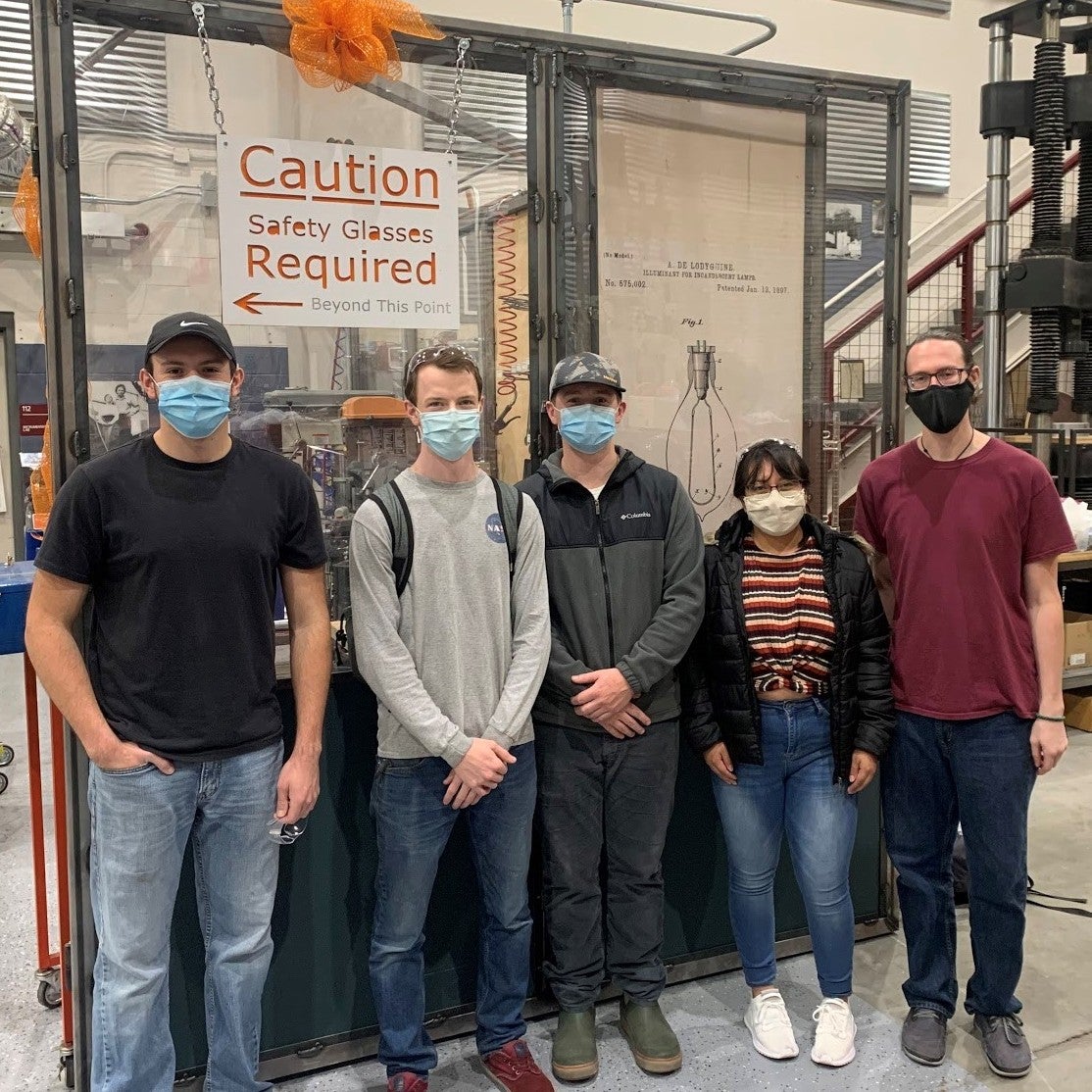
Universal PCB Fixture
Universal PCB Fixture
Our Challenge
Plexus, a contract electronics assembly manufacturer, is looking to create a printed circuit board (PCB) fixture. The fixture is being sought to augment the assembly process in hopes of preventing board and component damage during manufacturing, which results in financial losses. The fixture must be able to adjust to various board shapes and sizes (4″x4″ to 12″x12″), have working access to both sides, be electrostatic discharge (ESD) safe, handle temperature fluctuations (up to ~120°C), and move with the PCB to protect it throughout the entire assembly process.
Project Details
Why is this fixture needed?
All manufacturers fall victim to profit loss due to damage caused during the assembly process. We are developing a fixture to help reduce accidental damage to PCBs when handled by assemblers and while being transported around the factory.
Requirements set by Plexus:
-

PCB samples 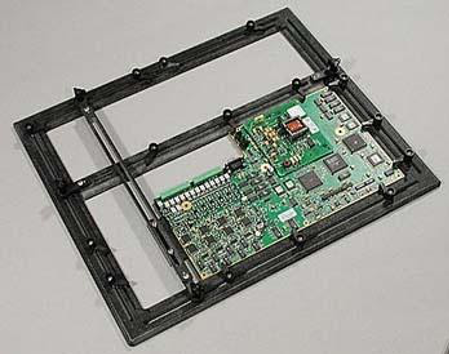
Fixture must reduce damage to PCBs
- Fixture should be able to fit and secure PCBs ranging in size from 4”x4” to 12”x12”
- Fixture needs to survive bake and wash cycles with temperatures around 120℃
- Fixture should hold PCBs that are up to 3.67mm thick
- Fixture must be electrostatic discharge (ESD) safe
- Fixture must have clearance for large components on PCB
- Fixture must have working access to both sides
- Fixture must be able to handle force applied by assembler
What’s Out There & Why does it not work
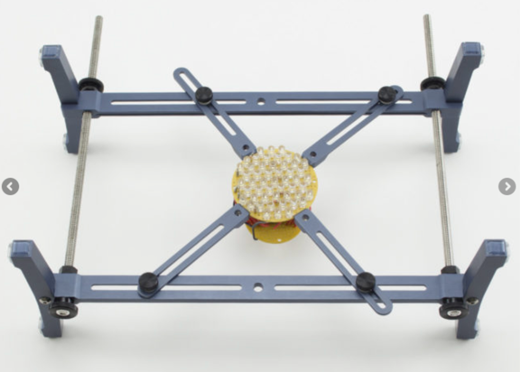
We stemmed some of our ideas for adjustable hand solder pallets from manufacturers like AGI, Garland, Pentagon, and Ascentec Engineering, which are shown below. Some types of solder pallets have issues with the accessibility of both sides of the PCB, which results in extra handling that can damage the PCB. Most of these designs also did not provide enough clearance for attached components. These existing products were also very expensive to purchase, so our group was tasked with creating a cost efficient solution that can be applied across the entire manufacturing process.
Form and Function
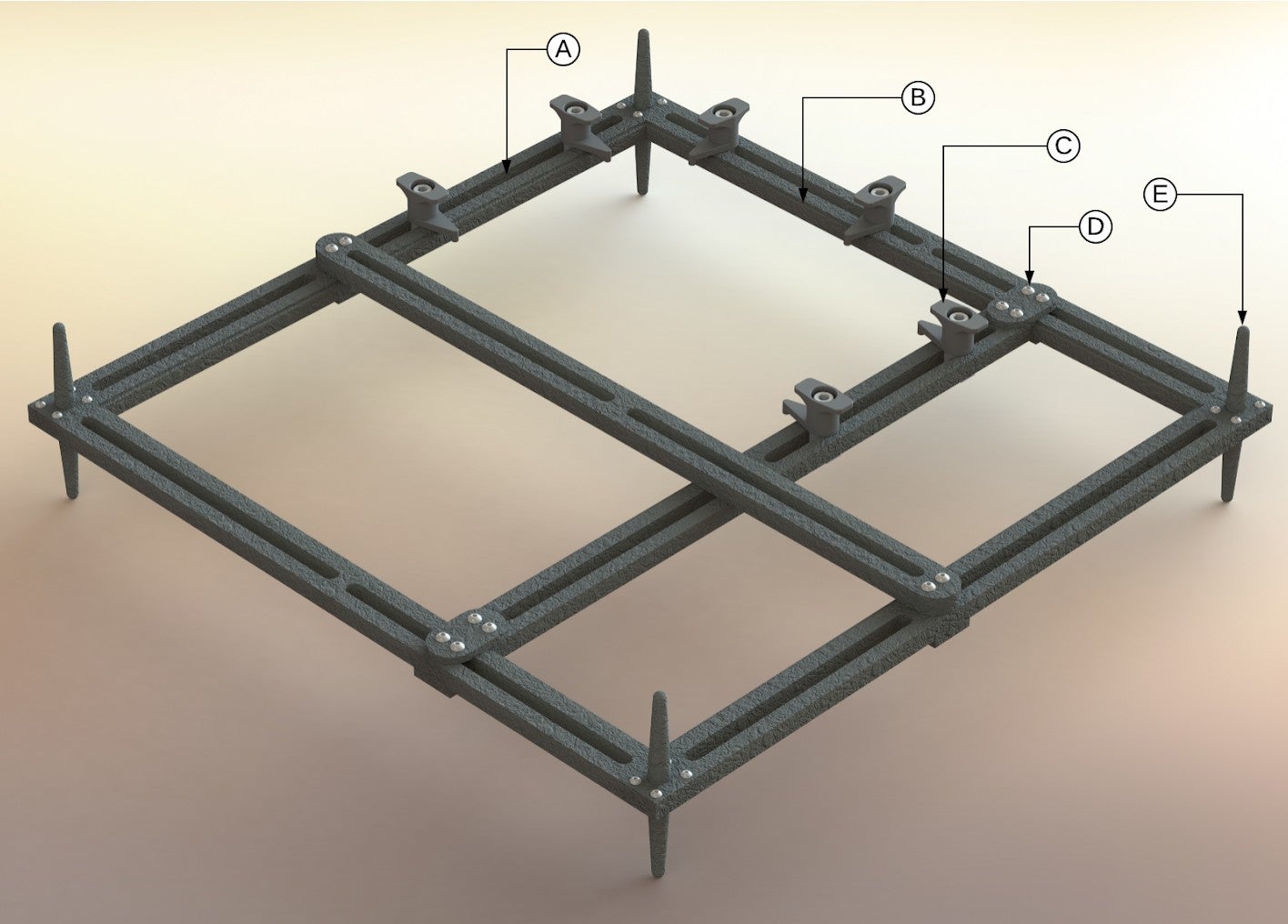
Prototypes
3D Printed Concept
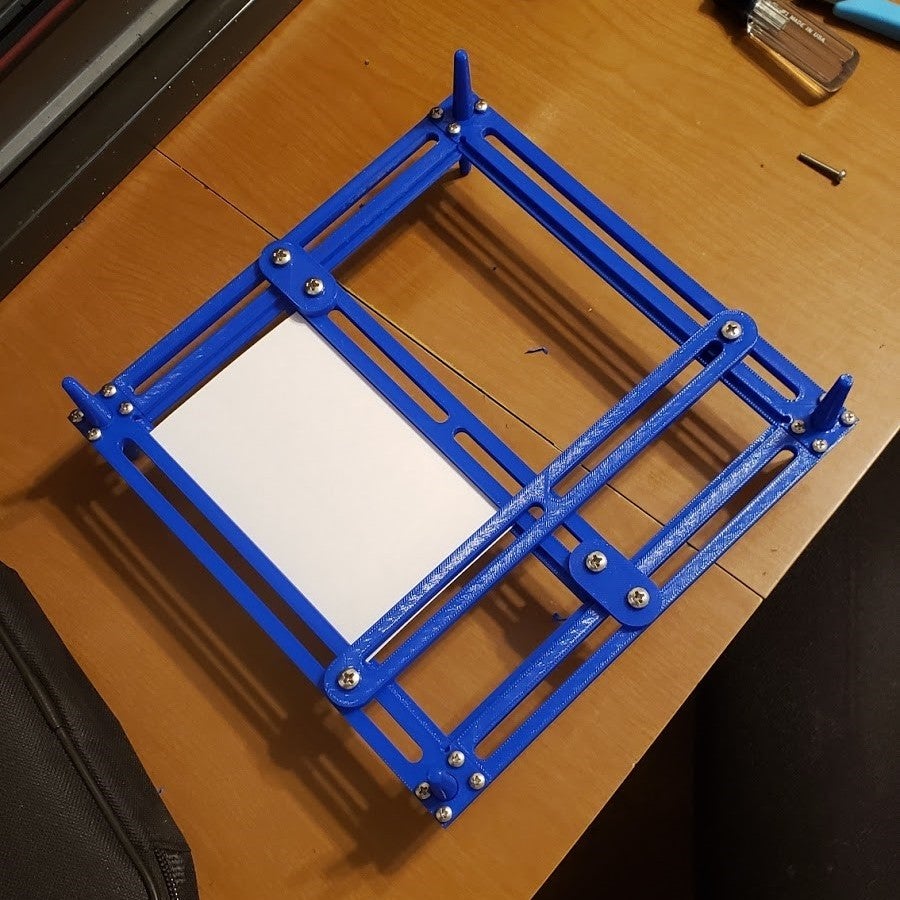
2/3 Scale
- Allowed for first time visual idea from concept to physical fixture
- Discovered potential design flaws in slider arms due to moments about the fixture screws
Acrylic Prototype
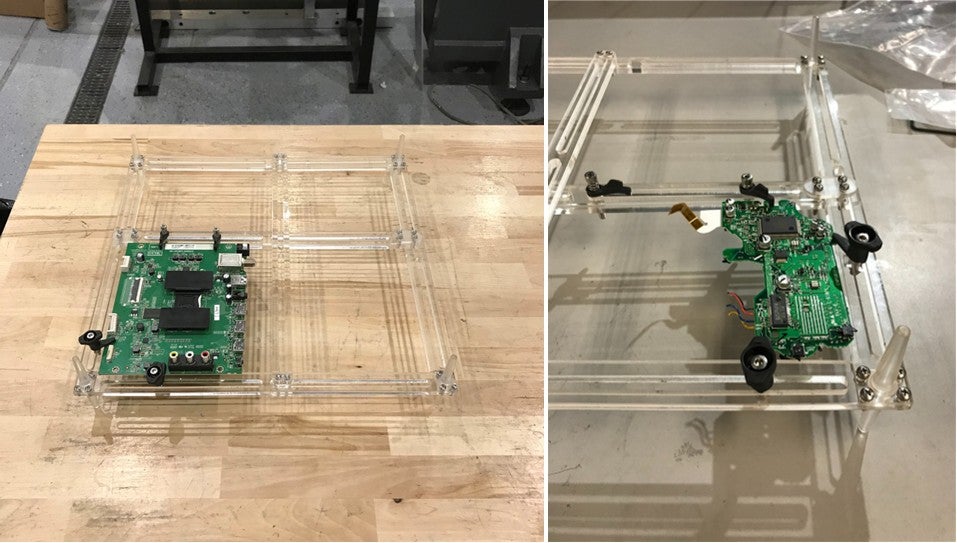
Full-Size Scale
- Allowed for various PCB board shapes and sizes to be tested
- Updated design that could be tested for real life situations that may occur on the factory floor
- Weak points were found that could be approved for next prototype iterations
- Acrylic prototype demonstrated structural qualities of final prototype material
- Minus the requirements of being ESD safe and resistant to high heat
- Acrylic was a cheap material that allowed the team to practice machining parts before building a prototype out of a more expensive material
Durostone Prototype
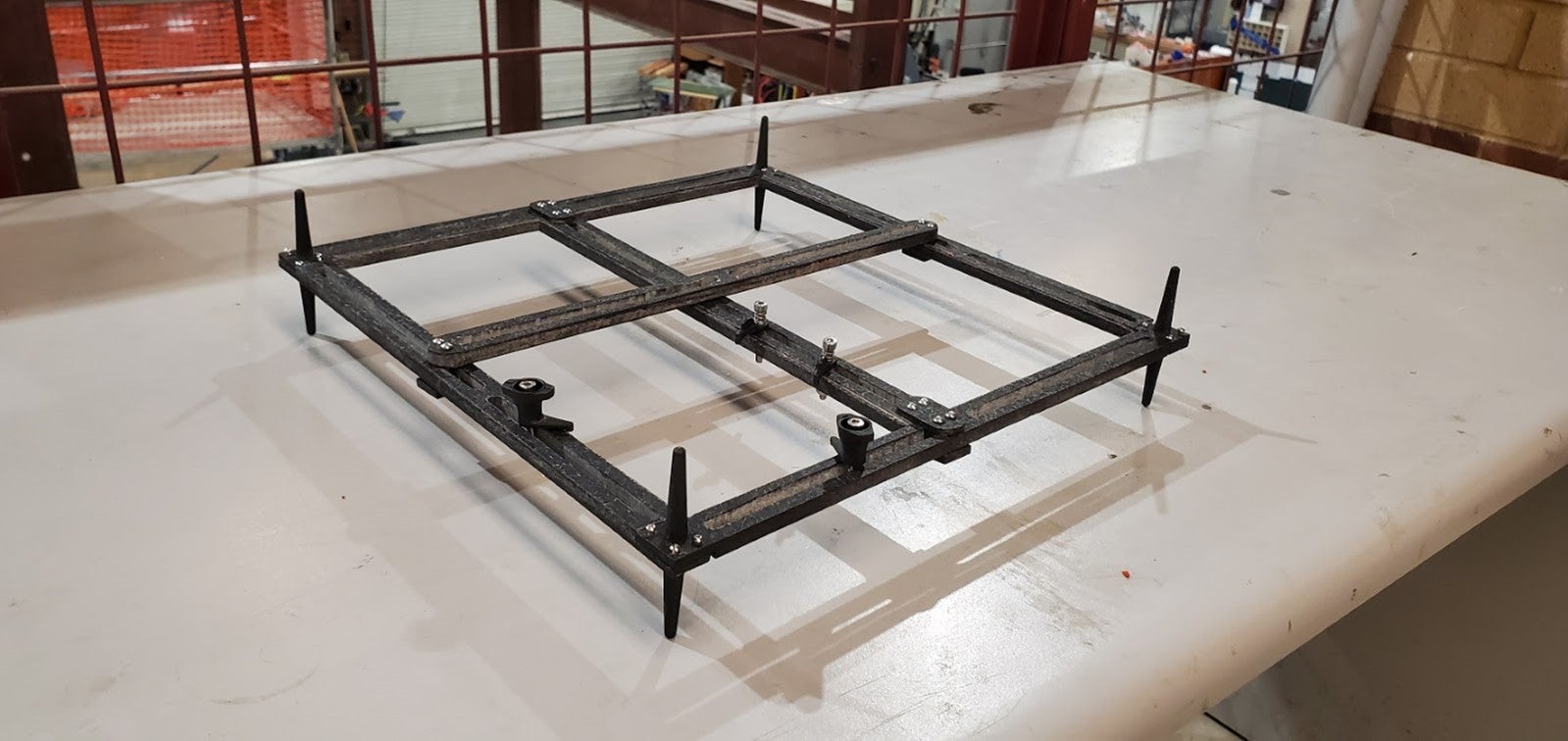
- Durostone material was found to be very durable/rigid to handle many iterations of manufacturing
- The durostone prototype was still lightweight
- Smaller parts of the project are much stronger than that of the past two prototypes
- Not as smooth for adjusting to different sizes of PCBs, but the structural integrity is more important
- Small parts were machined to improve the fastening of the fixture and its ability to secure PCBs
- Slots in the frame members were adjusted to remove “dead spot” in the fixture
- This prototype meets the requirements of being ESD safe and resistant to high heat
For more information on how our durostone prototype handled our testing phase, attend our Senior Design Showcase. You won’t want to miss it!


